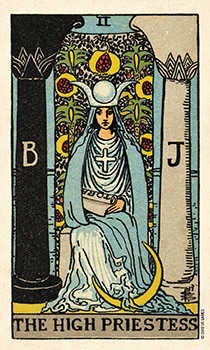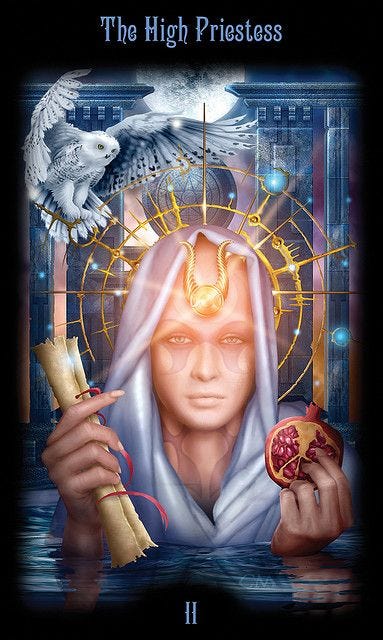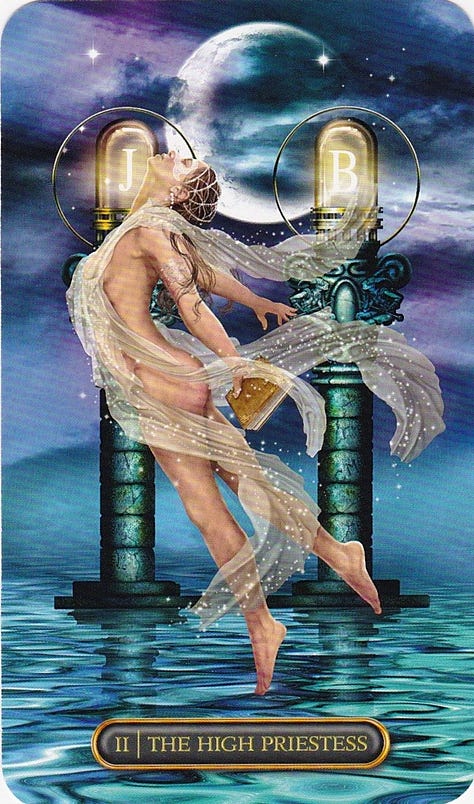


The Moon is in Sagittarius today, this Moon Day, and can be seen near the bright star Antares this evening. This is a fiery moon, doubly so, and moreover it is a moon with a sting, since Antares is the star at the Heart of The Scorpion, the star of the warrior, ruled by Mars.
So much sad news, while today Uranus enters Gemini, initially until November 8, when it returns to Taurus, and then moves into Gemini again from April 25, 2026, to August 3, 2032, and then from December 12, 2032, to May 22, 2033. Uranus, the planet of innovation, tech and upheaval will galvanise binary mercurial Gemini again for the first time in 84 years.
One could say we are living through the Fourth Industrial Revolution, and history tells us that industrial revolutions can be brutal in their effects on the everyday lives of ordinary people. The aftermath may bring better things, but meanwhile there is damage, dispersal and destruction. Gemini is lively and enquiring. Gemini clones things. Splits them. Scatters them. Changes local neighbourhoods. The Partition of India happened last time Uranus was in Gemini. As did World War 2. As did the founding of Israel. One might read this as a sign, for instance, that Ukraine shall not be reabsorbed into a renewed Greater Russia, or that Taiwan shall not be absorbed by China, whatever the capability of China to achieve this.
Gemini is journalism. It is trade and commerce, mostly short haul. Gemini is radio. Maybe we will see a return to local, indie or pirate radio stations. “Subversion”. Gemini is all things airy. Uranus is also the element of air. This transit could be great news for all pollinators for instance, birds and bees and butterflies, and stem cell technology will likely do amazing things in medicine during the coming few years.
We live in a continuum. Uranus in Taurus has not exactly been kindly, or smooth, with the inexorable rise of the anti-people, anti-social, anti-family, casual contract gig economy. We have all been made to pay, and are still paying, and how, for what Lehman Brothers did in 2008. Evil may not always be premeditated, but occurs as a law of consequences.
The world has never been quiet. Nor kind. Nature is “red and tooth and claw”, as Tennyson famously put it, and so is Mankind, the race of humankind, the animal, Man, who is part of Nature. But the world is a miracle. The miracle is the world and Life itself. It is a miracle that anything is here at all, that you and I are here right now. So much beauty. So much goodness, perhaps one could say, against the odds. But these are deeply unsettling times. We watch, we learn. We keep our equilibrium, says The High Priestess. We do our research, but we work only with the workable information. It is not to say we should hide away, or cower in our caves. When we need to act, and we are ready, there is a time for everything, when a cool head, and right timing is of the essence.
The High Priestess sits enshrined between two pillars, looking out at the world but yet slightly removed from it. She reconciles the right with the left, and connects the above with the below, sitting between light and dark. The 2 pillars on each side of her are named B for Boaz (severity) and J for Jachin/Joachim (mercy). The High Priestess connects these pillars and in doing so, she becomes a third pillar, as in, a link, a moderator, or a pillar of the community. She is the earthly, yet refined counterpart of The Magician. She holds a scroll, signifying learning. She holds a pomegranate, connecting her with the legend of Persephone, and the Underworld.

The pomegranate stands for fertility…but also for a pause in fertility. The earth goddess Demeter stopped all crops from growing when her daughter was abducted into the Underworld, inflicting famine in her grief and despair…and her rage, when she discovered that Zeus had known all along that it was his brother Hades (Pluto) who had taken her daughter. Persephone, Demeter and Hekate are an embodiment of the Triple Goddess, when understood as Maiden, Mother and Crone.
The goddess Hekate, like Hermes, was a psychopomp, moving between the land of the living and the dead at will, and it was Hekate who told Demeter where Persephone had been taken. So now Demeter went to war to get her child brought home again. And she succeeded and rejoiced at first. But when Persephone returned, she had eaten several pomegranate seeds on the homeward journey, given to her by Hades, who had no wish to lose her. She was a changed woman, and no longer the carefree girl her mother knew.

Persephone had become a queen in her own right, and she had eaten the seeds of the pomegranate, food of the dead, even after Hermes/Mercury had warned her she must not eat anything while he escorted her out of Hades. And so now she must go back to Hades for a third of the year, and then winter would return, and Demeter would mourn, and put an end to the growing season. This cycle of death and rebirth made Demeter and Persephone sympathetic to mortal grief of loss in a way that the other Olympic gods were not.
It is hard to contemplate, too dreadful, the agony of the mothers and fathers mourning their lost children. Texas, Gaza, Israel, the list goes on and on. “In their grief and at the hour of death,” wrote Edith Hamilton in her 1940 anthology of Greek myth, “men could turn for compassion to the goddess who sorrowed and the goddess who died.”
The quote is shared via Lithub, and so is this: experiments in the 1970s and 80s on the contraceptive powers of plants found that female rats fed pomegranates and paired with male rats who were not fed pomegranates experienced a 72 percent drop in fertility. In guinea pigs, the drop was 100 percent. The seeds, roots, and whole plant had no effect; the estrogenic compound was in the fruit—specifically, the skin around the seed and the rind.
The High Priestess signifies women in general, a woman who is critically important in the reading, possibly the enquirer herself, books, study, the marriage of intuition and intellect, a wise woman, a scholar, a teacher, a librarian, a woman of spiritual authority, a wise advisor, a helpful woman, a need for caution, a need to watch and wait. When the card is drawn reversed, ill-dignified/upside down, this card may be saying, you have done enough waiting. Now you need to do something. Or it may be saying, beware false friends. Be careful whom you confide in. Is this woman/person as trustworthy as you think?
The High Priestess, the Second Major Arcana card, belongs to the Moon, and therefore correlates with Mondays for timing purposes, or else the appearance of this card suggests events that may develop over the coming month.
The High Priestess, like Hekate, is associated with the Barn Owl. It is a funny thing, given the timing of this posting, but maybe this is what prompted it; I saw a Barn Owl last night, about seven in the evening, driving across the moor coming home again from my father’s place. Skimming the ground, flying away upslope of the road, a Barn Owl seen in broad daylight is an unusual sight, traditionally regarded as a symbol of mystery, wisdom, stealth, but also an omen of death or misfortune. Farmers in Europe often used to kill them for this reason, sadly, despite their value to farmers as rodent hunters. But they have much more to fear from us. 95 percent of British Barn Owls, the ultimate rodent hunters, are found to have been affected by rodenticides. Let’s hope Uranus in Gemini works to clean up that mess, in all its irresponsible, iniquitous, carelessness.

Ruled by The Moon, The High Priestess may be associated with Pisces, which is also ruled by the Moon. Alternatively, this card can be read as Taurus, through the connection of The High Priestess with Hathor, Egyptian Cow Goddess. Her headdress can be read both as cow horns or as an image of the Moon in three of its phases, waxing, full and waning. The Moon is exalted in Taurus, which is ruled by Venus, linking here the goddesses Venus/Aphrodite, Ishtar, Hathor…also Hekate.
“Hathor (Ancient Egyptian: ḥwt-ḥr, lit. 'House of Horus', Ancient Greek: Ἁθώρ Hathōr, Coptic: ϩⲁⲑⲱⲣ, Meroitic: 𐦠𐦴𐦫𐦢 Atari) was a major goddess in ancient Egyptian religion who played a wide variety of roles. As a sky deity, she was the mother or consort of the sky god Horus and the sun god Ra, both of whom were connected with kingship, and thus she was the symbolic mother of their earthly representatives, the pharaohs. She was one of several goddesses who acted as the Eye of Ra, Ra's feminine counterpart, and in this form, she had a vengeful aspect that protected him from his enemies. Her beneficent side represented music, dance, joy, love, sexuality, and maternal care, and she acted as the consort of several male deities and the mother of their sons. These two aspects of the goddess exemplified the Egyptian conception of femininity. Hathor crossed boundaries between worlds, helping deceased souls in the transition to the afterlife.
Hathor was often depicted as a cow, symbolizing her maternal and celestial aspect, although her most common form was a woman wearing a headdress of cow horns and a sun disk. She could also be represented as a lioness, a cobra, or a sycamore tree.”
The Well of Wyrd
She sits alone, she is casting stones
In graven runes she hears The Norns
Wyrd runs water; she must deal
In whisperings and Fates unsealed
Winds of fortune shape and shatter
Time, disposing of all matters
Is Serpentine, the ouroboros
Endless, rolling, still coils sinuous.
-Katie-Ellen Hazeldine
Thank you for reading.
Till next time :)





I love Persephone 🙏. Tears for all the lost children, and owls ❤️.
I love this piece 🤍